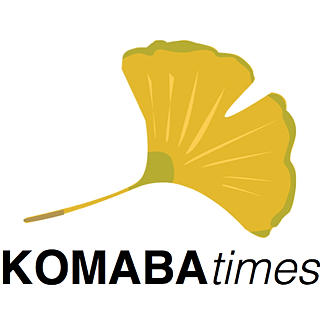Behind the Festive – Getting to Know Kosuge Village through the Genryu-Matsuri
- Komaba Times
- May 26, 2017
- 3 min read
Updated: Oct 18, 2019
By CAMERON LAM
As an otaku in Komaba, I don’t usually go out of the vicinity of Shibuya-Komaba-Shimokitazawa. Hence when I found a chance to go out of the concrete jungle of Tokyo, the two-day trip to Yamanashi-ken for the Genryu-matsuri (源流祭; lit. Festival of the Origin of the River) is an invitation I could not turn down.
The festival is held in Kosuge(小菅) village, a paradise with only about seven-hundred inhabitants about three hours of public transport away from the urbans of Tokyo. The festival was created some tens of years ago with the original intention of having people who left the village to return once every year.

Hilly Kosuge: The river where the name “genryu” - “Festival of the Origin of the River” came from. The river continues into the hilly terrain of Kosuge, mountains filled with overpopulated man-planted trees which cause landslide.
The festival, however, became a big success, attracting about ten-thousand participants including foreign tourists and Japanese travellers. The festival of “water and fire and gourmet” is held on 4 May every year with a new theme every year. Each year, stalls and onstage performances offered by local villagers are run throughout the day. At night, the festival climaxes in a massive bonfire and breath-taking fireworks. This year’s theme being fire, there is also a spectacular performance by the fire dancers.
As a Japanese local matsuri, Genryu-matsuri will give you an authentic taste of Japanese culture. The beginning of the festival is marked by fireworks at 11am, while the food stalls begins selling food as early as 10:30am. Local food with amazing aroma and exotic flavours are for sale at the festival, which includes sansai, konyaku-sashimi(konjac sashimi), shikaniku(venison)… the one that tops everything, however, is the huge barrel of Japanese sake made by the villagers.
The food and the sake for sale at the festival are all local products which the villagers are proud to offer. While you are dazzled by the refreshing taste of sansai decorated with the fragrance of local wasabi, you will also witness the genuine smile on the face of the villagers, feeling glad that tourists are impressed by their effort. With traditional Japanese music performed by local primary school students on the stage, at this point, all we see is a joyful rural village holding a massive festival with stunning performances and delicious gourmet. However, the festival is not only a mere event for everyone to have a good time.

Handmade mochi: Villagers making red bean paste mochi fresh from scratch.
After visiting every food stall and having enjoyed the performances, we are then introduced to the social and environmental issues of village Kosuge. In a presentation by a local villager, it is said that the village is facing problems of aging population and low birth rate – 45% of the village population being 65 year-old or above, while only three babies were born last year. The festival is actually a method devised to battle such problems. The villagers also hold annual events that welcomes people from the city to interact with local villagers for hopes of marriage – a village-scale speed-dating event, so to say.
A tour by a volunteer worker, Truong, also exposed some environmental problems of Kosuge. The biggest challenge faced by the village yet is the lack of flat soil for farming. As a rural village far from cities, a certain degree of self-sufficiency is important to keep the village functioning without relying too much on supplies from the city. The hilly terrain of Kosuge, however, makes elderlies climb up and down the mountains every day to farm, only to harvest enough just to sustain themselves. Coupled with environmental hazards like landslides, much work has to be done to salvage the village from its currently unsustainable state.


The Girl Who Played with Fire: The finishing firework and performance at night.
While the Genryu-matsuri is no doubt an exciting event for tourists, it is also a call for attention by the villagers. Through holding a festival, Kosuge village attracts not only tourists’ attention to the beauty of the village, but also attention to the challenges faced by the village. The question of whether Kosuge can still sustain itself in the future remained unanswered.
However, for one I am impressed by the optimism of the villagers. Amidst the crisis of the village, one can nonetheless feel the virility of the villagers at the festival, their welcoming smiles and genuine kindness.
All photos by Xuan Truong Trinh.





Comments